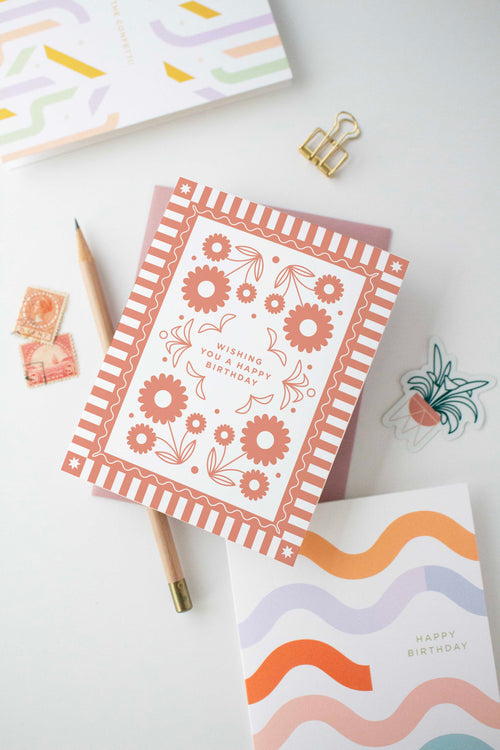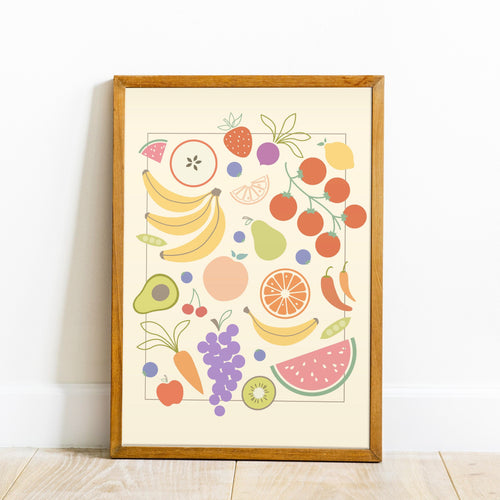I’ve always been very into displays (even at science fairs and things in school, I had to have the coolest tri-fold display) so I had big plans for my market booths. My free-standing displays definitely were born out of that need to ‘be cool.’
I have two different free-standing displays. The first is what I refer to as ‘the rack’ and it’s a combo of shelves and larger flat surfaces. The second, and what I’ll be walking through in this blog, are what I call my ‘walls.’ They’re essentially free-standing fabric walls with the ability to hang products with s-hooks.

For context, these walls were originally very different. In my head I thought they would be built out of PVC pipe but if you follow me on Instagram, you saw that that very much didn’t work and I had to go back to the drawing board. At the time I was very frustrated because, as usual, I wanted it to be easy & quick but I’m much happier with how these turned out.

Okay enough back story! Here’s what you’ll need (instructions are for 1 wall display):
Wood base
- 3, 8-foot 2”x2” s.
- 1, 2’x4’ project board
- 4, 2.5” screws (I used ¼" size)
- 4, wing nuts (matching size as the screws. So I used ¼" wing nuts)
- 1.5” wood screws (I suggest just getting a box)
- Screwdriver
- Chop saw or hand saw & miter box
- Drill with multiple bit sizes
- 2, ¾" dowels
Fabric wall
- At least 2.5 yards of 60” wide fabric (I suggest Duck cloth or an outdoor fabric. You can find it at Jo-Ann's and they’ll help you if you’re not familiar with fabric.)
- Grommets. I bought this kit form Amazon that came with all the pieces.
- S-hooks. I used these but you can get all kinds of sizes.
- Iron
- Sewing machine
- Thread
- Ruler
- Scissors

Wood base Instructions
- If you purchase your pieces at Home Depot, they can cut your pieces for you at your request (first two cuts are free! After two it’s a few dollars for every few cuts). I cut all my 2x2’s at home but I had them cut the 2’x4’ project board in half. Ask them to cut it in half longways into two 1’x4’s
- Cut your 2x2s. I used a chop saw. My vertical pieces are 6’. I cut 2 feet off the bottom of two pieces. These two 2’ pieces will become the horizontal base pieces.
- Cut your angled, connecter pieces (I’m sure it has a technical name). I’m sure there’s some precise, technical way to get this exact but I just wung it. I started with an 18” inch piece and cut a 45-degree angle off each end, put the pieces together, then slowly cut more off one end until they fit snuggly.
- Screw together your 2x2’s. I put one screw at each end of the angled piece (1 into the 6’ piece and 1 into the horizontal base) and then 2 coming up from the base to the vertical 6’ piece. (If your screws aren’t long enough you can drill a pocket hole. A pocket hole is essentially a larger hole and your screw sits further into the wood, meaning it will reach into the pieces a bit better.)
- In your 1’x4’ project boards, drill 1 ¼" hole in each corner all the way through. Be sure the hole is about ½" in from all sides.
- Line up those project boards with your vertical 6’ pieces and drill the same size hole all the way through the 2x2’s.
- In your 6’ vertical pieces, drill holes for your dowels. Use a 7/8ths bit so the dowels aren’t hard to assemble. Be sure not to drill into the holes you just made! Drill a bit farther down. Mine were about 2” from the top and bottom of my 6’ vertical pieces.
- Assemble! Place a screw through the project board and 2x2 and affix a wing nut to the back to secure.
Fabric Wall Instructions
Side note: if you’re not familiar with sewing you can do all of this with fabric glue! Just allow time in-between each step to dry thoroughly.
- Cut your pieces to size and allow extra for fold over. So, measure from the top of your top dowel to the bottom of your bottom dowel, then add 4 inches for the dowel casing (the ‘tube’ the dowel will go through), plus an extra inch for fold over. Ideally you want the fabric snug so it has tension. Exact measurements will depend on where your dowels ended up.
- Sew your fold over. In order for the ends not to fray, on the top and bottom you want to fold over ½" of fabric, iron that ½" down, then sew it down.
- Sew your casing. The ‘tube’ the dowel will go through is called a casing. From the top of your fabric fold over 2 inches. Iron that fold down then sew. There will be two lines of seams. You can follow the seam from step 2 as a guide so they line up.
- Repeat steps 2 and 3 on the other end.
- Trim all the threads. The you’re done sewing!
- Time for Grommets! Figure out the layout you want, I did 5 across by 5 down, and then punch & assemble them. This takes time to get them lined up & evenly spaced so be patient, you’ll get there.
-
Assemble everything! Then add your product and you’re ready for a market!

You can see the s-hooks & grommets better in this photo.
I know this is long and there’s lots of steps but I promise it’s not as bad as it seems!
If you build a display be sure to tag me @lineandkind. I would love to see it!





0 comments